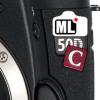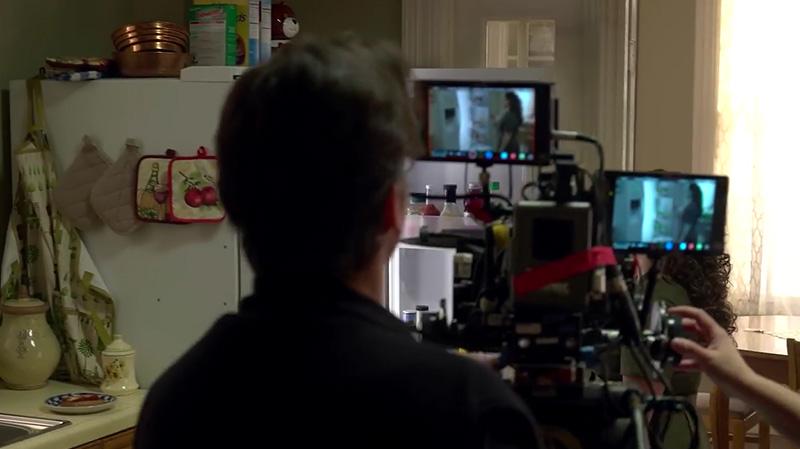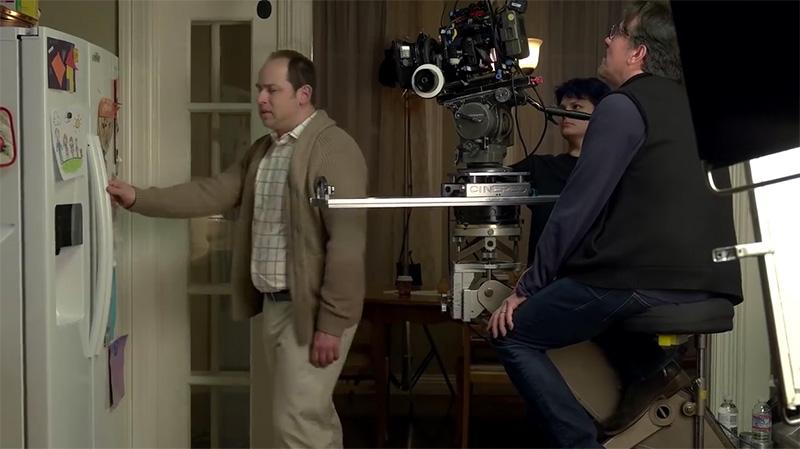-
Posts
1,653 -
Joined
-
Last visited
Content Type
Profiles
Forums
Articles
Everything posted by Julian
-
Depends on what you want to do with it.
-
It's not much bigger/heavier than a Canon EF 24-70mm f/2.8 II. It's aimed at dslr photographers - Canon 5DS / Nikon D810. Not really a huge lens on those kind of camera's. Of course a fullframe f/2 zoom is going to be big...
-

First Sony A7R II user experiences - global shutter and native ISO 800?
Julian replied to Andrew Reid's topic in Cameras
I don't. I prefer paying 5% less and having the 30 minute recording limit I'll never reach anyway. Of course I understand there are plenty of people who'd pay the extra for not having the limit, but I don't think I'm the only one who doesn't have a problem with 30 minutes max. -
Sigma says it's as good as the 24mm f/1.4 and 35mm f/1.4 Art at those focal lengths (of course it's a stop darker though). https://www.sigma-photo.co.jp/english/new/new_topic.php?id=524 I expect it to be excellent, like all the Art lenses so far. Prime quality in a zoom, very nice.
-
Want to see all the numbers about the Sony A7R II? Check this: https://developer.sony.com/devices/cameras/a7r-ii/ It's the specification sheet for übernerds. 240 fps is certainly not there. 1280x720 120 fps it is.
-

First Sony A7R II user experiences - global shutter and native ISO 800?
Julian replied to Andrew Reid's topic in Cameras
42 megapixels is there for a reason. It makes 2x2 pixel binning possible for 4K in fullframe mode. Kimio Mak (Sony)i: Let me explain about why we chose this size. I didn't decide on 42 megapixels first, then the sensor was created. When we created these devices, I prioritized ... I don't like to lose sensitivity, compared to the 36-megapixel [sensor], right? And also, I really wanted to realize 4K movies. They have to read/write faster, right? So 4K movies had to just fit, and also ISO sensitivity should be better than 36-megapixel sensors. So how many pixels is the best pixel size? Let's calculate it! That was the process. From that, the conclusion was that 42-megapixel was the best pixel size to realize 4K movies... Check the interview here: http://www.imaging-resource.com/news/2015/06/16/sony-qa-the-must-have-sensor-tech-of-the-future -
The Nikon D5500 is a DX camera with a crop factor of 1.5x. To get the equivalent focal lenght in fullframe, you have to multiply by 1.5 (not 1.6, that's Canon only). So the 35mm is 35 x 1,5 =52,5mm. The 24-720mm on your powershot is also the fullframe equivalent. So yes, the powershot is a lot wider. The Sigma 18-35mm f/1.8 is an excellent lens. It's not cheap, but absolutely worth the money. You don't have a lens yet, you want to do photography and video, you'll need some glass. The Sigma is a great investment for both photography and video. It will give you a 27-52,5mm equivalent, so it's not extremely wide. If you really don't have a budget, pick up a 18-55mm f/3.5-5.6 kit lens somewhere for next to nothing (2nd hand they should go really cheap). It will give you the same angle as the Sigma, just not the same aperture. But if you have lights f/3.5 should be ok and the D5500 is good at higher iso values anyway.
-
Even the zombie map is broken. Can't zoom in on Europe to find a nearby safe house
-

First Sony A7R II user experiences - global shutter and native ISO 800?
Julian replied to Andrew Reid's topic in Cameras
Autofocus with EF lenses + Phase Detection works pretty good. -
You can still shoot avchd. And SD cards are really cheap right now. Can get 32GB class 10 here for €10 and you can sell your old ones. It probably won't hurt your budget much. It's Fujifilm who raised the bar and started to show what's possible with firmware updates. Not as relevant for filmmakers, but the things they do for photographers with firmware updates is amazing. Every time they release a new camera you get almost all the new functions (that aren't hardware bound) on the old version.
-
Very cool project! Trailer is looking great.
-

Samsung NX500 -- Panasonic LX100 --Sony RX10 II?
Julian replied to David Brunckhorst's topic in Cameras
I think you should swap the NX500 for the Panasonic G7 on your list. The NX500 crop factor is a deal breaker. The choice between interchangeable lens and fixed lens you have to make yourself. -
Sony A7S = E mount Canon = EF mount Your question is about using Canon EF lenses on the Sony A7S, right? The focal length does not change. Sharpness and chromatic aberration won't make any difference: unless you use electronic Canon lenses on your Canon camera with automatic lens profile corrections (active on jpg files you shoot with the camera, maybe in video too, not sure about that). Anyway, your manual video primes should work the same on the A7S as they did on the 60D. The biggest difference is the crop factor of course. The A7S is fullframe, so your 24mm will give you a much bigger field of view. On the A7S it is actually 24mm, instead of 38mm (equivalent) on the 60D (24 x1,6x cropfactor).
-
Even the behind the scenes seems to almost completely ignore the camera. They did rig it up to the extreme levels though, can't even see the camera. What's the point...
-
Sony uses some kind of lossy compression that can cause artefacts. Some articles: http://www.rawdigger.com/howtouse/sony-craw-arw2-posterization-detection http://diglloyd.com/blog/2014/20140214_1-SonyA7-artifacts-star-trails.html Haven't seen much - if any at all - real world use where this is a problem though. Maybe if you shoot a lot of star trails...
-
Haven't watched it, skipped trough it, sure as hell I'm not going to watch it. Looks terrible. Sharpened plastic crap. Looks like a mediocre cheap tv show. Still, the intention is good. The execution just sucks. Ok, I can live with a crappy story, it's marketing so I won't expect art. But then at least make something that looks attractive, or something that has that hollywood blockbuster feel to it. Let that big sensor shine. Show some depth of field. This could have been a promo for some 2/3" 4K camcorder.
-
422 8 bit hdmi output. It's in the specs.
-
By the way, the APS-C mode for stills will result in 18MP files. The A7R II + FE 28mm f/2 would make a neat travel kit, giving you both fullframe wide angle shots and 42mm equivalent 18MP aps-c-shots.
-
I don't like the sample video very much either, but it looks like a typical one with high contrast, too much sharpening. S-Log2 should fix the DR, sharpening can be toned down probably. I did notice the moire but I'm watching on a 1080p screen. I hope we will see some proper videos soon.
-
Sony A7R II product page & specs: http://www.sony.net/Products/di/en-us/products/dkw5/index.html
-
Having fullframe 4K with moire + pixel perfect S35 4K is nice imo. Use full sensor 4K for shallow DOF shots, moire isn't an issue anyway. S35 for detail/landscape shots. Even in S35 mode you could put a speed booster on it and have pixel binned fullframe 4K...
-
A lot of sample video's here: https://www.youtube.com/playlist?list=PLL06nPE7_lzMwCmNsXjTJ3T6y8Vh-AmNC It definitely is not 1080p at those speeds. Maybe it's saved as 1080p but looks upscaled. Still, looks better than Nikon 1 at those crazy speeds.
-
Yep, just saw it and edited my post. XAVC-S 100Mbps. Super35mm 4K sample: Haven't found any fullframe 4K footage yet. I think we can expect 4K from the full sensor to have some faults (moire / aliassing) No way the whole 42MP resolution can be downsized to 4K internally.
-
Good point. The Press release doesn't mention anything like external recording though. No footnotes either. If it's external recording they fucked up the press release... Edit: it states that the A7R II uses XAVC S7 codec and records 100Mbps 4K. So this is internally for sure. If it was external only they wouldn't give a bitrate because it'd be uncompressed.
-
Poor everyone.. Panasonic, Samsung, Nikon, whatever... If it doesn't have some major faults this truly is the perfect hybrid for photography/video and miles ahead of everything else. $3200 is damn cheap for what you get. It even does phase detection AF with (some) third party lenses, 399 phase detection points on sensor...




